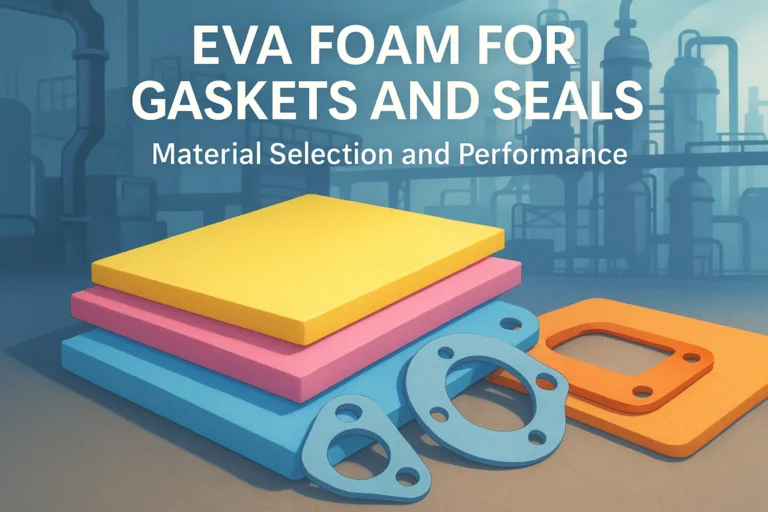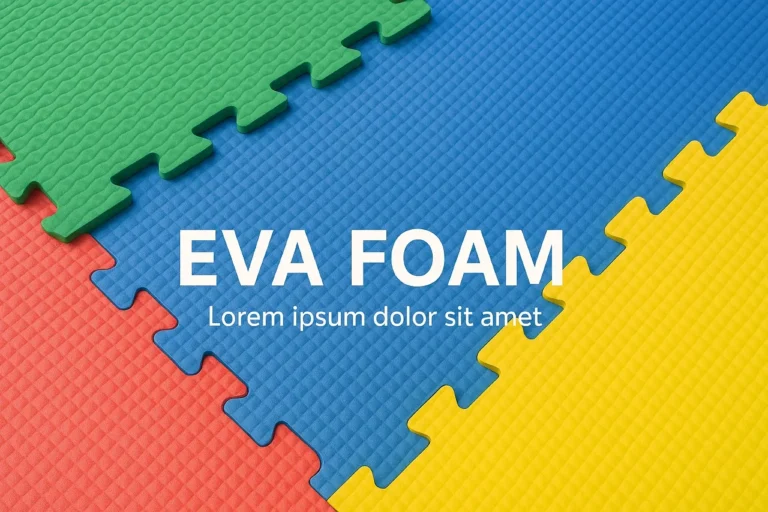EVA Foam: Key Technical Advantages for Product Design
Key Technical Advantages of EVA Foam for Manufacturing and Product Design
EVA (Ethylene Vinyl Acetate) foam is widely recognized as an exceptionally versatile material offering numerous benefits in manufacturing and product design. As a provider of EVA foam in sheet form, roll form, custom products, and specialized applications, it’s crucial to understand and communicate the unique technical advantages this material offers.
1. Exceptional Durability and Resilience
One of EVA foam’s primary advantages is its exceptional durability and resilience. Unlike traditional foams, EVA maintains its shape even after prolonged compression and repeated impacts. This makes EVA foam ideal for products requiring durability, such as sports gear, automotive interiors, footwear, and protective packaging.
2. Superior Shock Absorption and Impact Resistance
EVA foam provides superior shock absorption, effectively cushioning impacts. Its ability to dissipate energy makes it ideal for protective equipment like helmets, knee pads, sports mats, and even automotive applications. Its capacity to reduce vibration and impacts safeguards users, thereby enhancing product safety significantly.
3. Lightweight and Easy Handling
Despite its robustness, EVA foam is incredibly lightweight. This makes handling and manufacturing easier, reducing transportation costs and overall weight in final products. Lightweight properties are especially beneficial for products in sports, medical, and aerospace industries, where weight is a critical factor.
4. Excellent Flexibility and Customization
EVA foam is highly flexible and can easily be customized into various shapes, thicknesses, and densities. It can be effortlessly cut, molded, and fabricated, providing designers and manufacturers endless possibilities for innovation. Customization is particularly advantageous for specific design needs, enabling precise product specifications.
5. Outstanding Thermal Insulation Properties
EVA foam has strong insulating properties, making it ideal for thermal management in various applications. It helps maintain temperatures, protects products from thermal shocks, and provides comfort in applications such as footwear, seating, and automotive interiors.
6. Water Resistance and Chemical Stability
EVA foam is water-resistant and demonstrates excellent chemical stability. Its resistance to moisture, oils, and other chemicals makes it a reliable choice for outdoor and marine environments, protective gear, and hygiene-sensitive applications. It helps extend product life cycles and maintain safety standards in demanding environments.
7. Non-toxic and Environmentally Friendly
One critical factor driving EVA foam’s popularity is its safety and environmental friendliness. EVA is non-toxic, BPA-free, and generally recyclable. Its low environmental impact and compliance with safety standards make it suitable for consumer products, children’s toys, medical equipment, and food packaging.
8. Versatile Aesthetic and Surface Treatments
EVA foam can be manufactured in a variety of colors and finishes. Surface treatments such as embossing, laminating, and printing can enhance aesthetics and functional aspects of products. These customizable aesthetics open opportunities for branding, improving market competitiveness.
Application Areas
- Sports and Recreation: Mats, protective padding, footwear.
- Automotive: Interior padding, sound and thermal insulation.
- Packaging: Protective inserts, cushioning.
- Medical and Orthopedic: Orthopedic insoles, prosthetics, protective padding.
- Marine: Buoyancy aids, boat seating, deck mats.
Conclusion
EVA foam’s numerous technical advantages—durability, shock absorption, lightweight, flexibility, insulation, chemical stability, non-toxicity, and aesthetic versatility—make it a top choice in manufacturing and product design. Understanding these attributes can significantly improve product quality, safety, and market performance.
By leveraging these advantages effectively, manufacturers and designers can enhance innovation, sustainability, and customer satisfaction.







